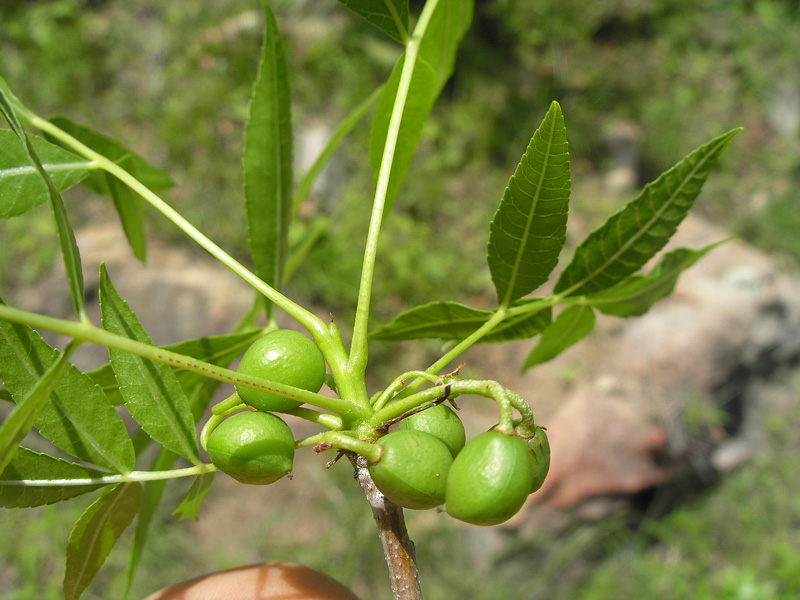Burseraceae
|
Burseraceae |
|
|
PLANT: Trees or shrubs, in ours with semi-succulent trunks and branches, the outer bark yellowish to beige, the inner bark bluish-green. LEAVES: alternate, simple, once-pinnate (in ours), or bi-pinnate, mostly odd-pinnate, usually crowded at the end of small branches, exstipulate, glabrous (in ours), the rachis narrowly winged; leaflets (1)3-11(-many), opposite or sub-opposite. INFLORESCENCE: uniflorous or a cyme of 2-5(-6) flowers (in ours) to paniculate, generally appearing before or with the first leaves, mostly bracteate. FLOWERS: small; sepals in ours light green to slightly reddish, triangular, as many as petals, 1-2 mm long (in ours), basally connate, valvate; petals in ours reflexed at anthesis, white-cream colored (in ours) to pale yellow, greenish or reddish, lanceolate, valvate, 3-4 mm long (in ours), 3 (-5) in pistillate flowers, (3-)5 in staminate flowers; stamens in ours about twice the number of petals, in two whorls, inserted in the base of the nectar-disc, mostly smaller and sterile in pistillate flowers, the filaments ca. 1 mm long, the anthers 1.5-2 mm long; nectar-disc annular, 6-10 lobed, light yellowish-cream (in ours); pistil with 2 or in ours 3 carpels with stigma lobes and locules equalling carpels in number, the style short; ovules 2 per locule. FRUIT: with 1 valve per carpel, in ours purplish-green, 5-7 mm long, 5-6 mm wide; peduncle recurved. SEEDS: at maturity with a thin orangish-red aril (in ours), 5-6 mm long. 2n = 22, 24. NOTES: ca. 100 spp. AZ, CA, FL and most of tropical America with the greatest diversity in the tropical deciduous forests of western Mex. (for J. Burser). Johnson, M. B. 1992. Desert Plants 10:126-143. McVaugh, R. and J. Rzedowski. 1965. Kew Bull. 18:317-383. REFERENCES: Salywon, Andrew. 1999. Burseraceae. Ariz.-Nev. Acad. Sci. 32(1). |
|
